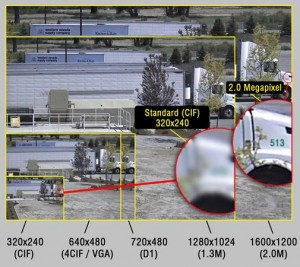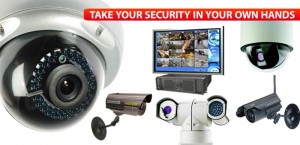![]() Right Click I.T Services now provides CCTV consultation, design, installation and support. We use only the latest technology High Definition IP Cameras and Network Video Recorders. Our systems will be designed to suit your requirements and within your budget.
Right Click I.T Services now provides CCTV consultation, design, installation and support. We use only the latest technology High Definition IP Cameras and Network Video Recorders. Our systems will be designed to suit your requirements and within your budget.
Client Case Study : JumpStart FDC
Client Case Study : Stereo 974
What is IP CCTV
IP based cameras are the future. They work by turning images and audio into data then transmitting this data over a network or Internet connection. The ultimate benefit of this over analogue CCTV systems is greater flexibility, better performance and easier installation.
Whilst IP CCTV has been available for around 10 years, it is only in the last few years that the technology has matured, leading to the developments in Megapixel IP. Read below for a summary on the benefits of using IP based systems over traditional analogue systems.
Resolution
 Analog cameras have been around for more than 60 years. In that time the cameras have changed, but the transmission of the signal has stayed the same. The cameras and recorder still use a standard coax cable and there are limitations to the amount of data that coax can transmit. An IP camera will use either CAT 5 or CAT6 cable both of which are designed to transmit much higher rates of data. The other issue with analog cameras is that the DVR not only records the video but also converts it to digital and compresses it. This takes a lot of processing power and thus limits the resolution it can record as well. IP cameras have processors built into the camera. They are converting and compressing the video feed before sending it to the recorder. So where a 16 channel analog system has 1 processor, a 16 channel IP system will have 17 processors.
Analog cameras have been around for more than 60 years. In that time the cameras have changed, but the transmission of the signal has stayed the same. The cameras and recorder still use a standard coax cable and there are limitations to the amount of data that coax can transmit. An IP camera will use either CAT 5 or CAT6 cable both of which are designed to transmit much higher rates of data. The other issue with analog cameras is that the DVR not only records the video but also converts it to digital and compresses it. This takes a lot of processing power and thus limits the resolution it can record as well. IP cameras have processors built into the camera. They are converting and compressing the video feed before sending it to the recorder. So where a 16 channel analog system has 1 processor, a 16 channel IP system will have 17 processors.
The end result of all of this is that the video from an IP system will be higher resolution than an analog one. A higher recording resolution means more usable video. It means the difference between being able to identify someone or not. With so many products and options we can forget the point of the system is to provide information. Better resolution means better evidence and evidence is the entire goal.
Scalability
IP cameras will connect to a network (most likely through a switch) and from there the data is collected by the NVR through software. There is no direct connection between the NVR and the cameras. There is also no physical limitation. With an analog DVR, the amount of channels available is set by the amount of incoming BNC connectors the DVR is built with. When you buy a 16 channel DVR and decide that you need a 17th camera, your only option will be buying another DVR. With an IP system you can simply add another camera license (if needed) and expand to 17 cameras. This is an added benefit for small and medium sized systems.
For larger systems the limit of analog DVRs creates an issue if dozens or hundreds of cameras are in place. Having multiple DVRs in one location makes monitoring and playing back recorded video more complicated than if everything is controlled by one unit. NVR units can support hundreds of cameras spanning multiple servers but keep everything together for the user.
Other Advantages
Above, we mentioned the two primary advantages of IP camera technology, which provide a huge benefit. There are some other great things about IP surveillance too though, and while maybe not quite as important, are worth noting.
One advantage is PoE or Power over Ethernet. Analog does not have this capability, where IP does. PoE will save money on the installation, great if you have a specific budget for your CCTV system. PoE will provide just about everything over one Ethernet cable – that includes video, audio, power, ptz controls, alarm, and pretty much all other camera data functions.
Another advantage is that IP uses Cat5 wiring, where analog uses Siamese or multiple wiring. Cat5 cable is cheaper than Siamese. So, not only will you save money on the install with PoE, but you’ll also save using Cat5.
Choosing IP over analog will essentially future-proof your system. Everything is moving towards IP already and has been for a little while now. All the technological upgrades as far as video quality is concerned are in the IP realm, where analog systems have a very limited potential. Once you reach that potential, your next step up is IP. So if you’ve already got an analog system, you’ll need to upgrade eventually. IP systems will always be upgradeable, so you’ll never have to replace the system.
